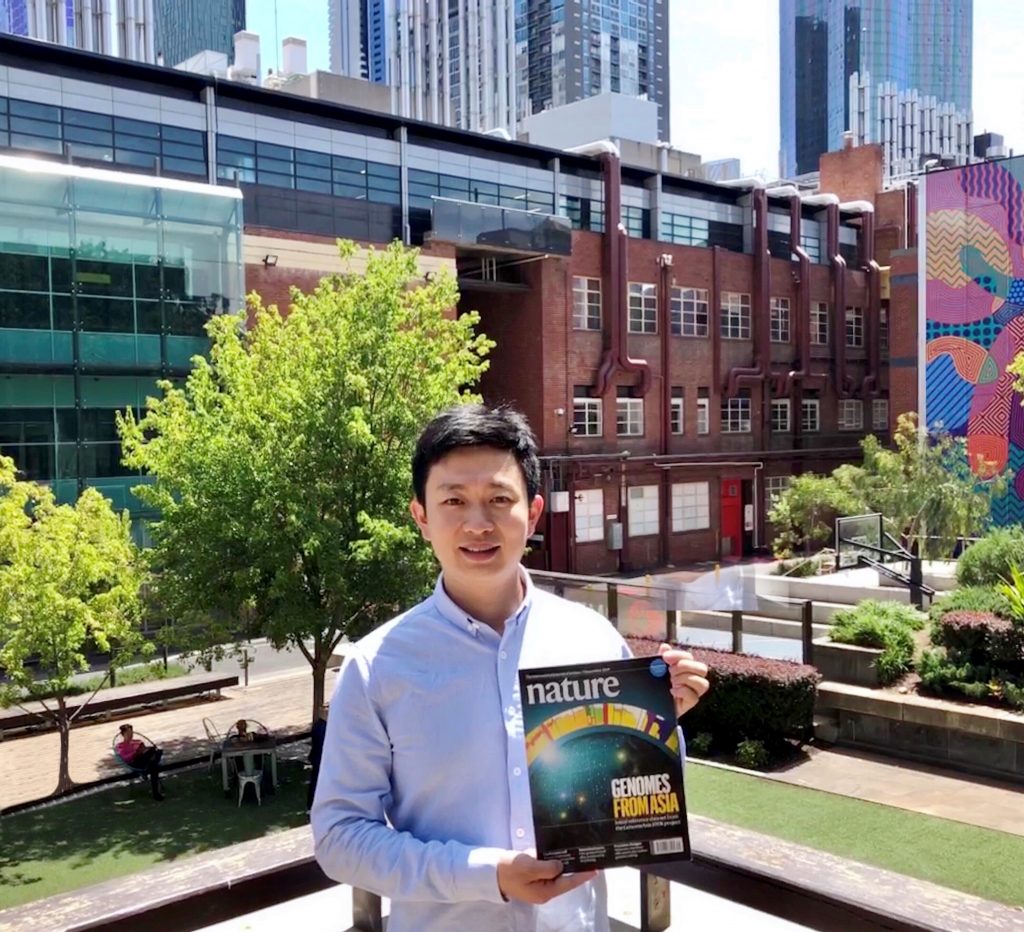Additive Manufacturing of ultrafine-grained high-strength titanium alloys

Congratulations to P3 Post Doctoral Researcher Dr. Duyao Zhang, on his article ‘Additive manufacturing of ultrafine-grained high-strength titanium alloys’ published in the renowned Nature Journal.
Zhang, D., Qiu, D., Gibson, M.A. et al. Additive manufacturing of ultrafine-grained high-strength titanium alloys. Nature, 576, 91–95 (2019). https://doi.org/10.1038/s41586-019-1783-1
Abstract
Additive manufacturing, often known as three-dimensional (3D) printing, is a process in which a part is built layer-by-layer and is a promising approach for creating components close to their final (net) shape. This process is challenging the dominance of conventional manufacturing processes for products with high complexity and low material waste1.
Titanium alloys made by additive manufacturing have been used in applications in various industries. However, the intrinsic high cooling rates and high thermal gradient of the fusion-based metal additive manufacturing process often leads to a very fine microstructure and a tendency towards almost exclusively columnar grains, particularly in titanium-based alloys1. (Columnar grains in additively manufactured titanium components can result in anisotropic mechanical properties and are therefore undesirable2.) Attempts to optimize the processing parameters of additive manufacturing have shown that it is difficult to alter the conditions to promote equiaxed growth of titanium grains3.
In contrast with other common engineering alloys such as aluminium, there is no commercial grain refiner for titanium that is able to effectively refine the microstructure. To address this challenge, here we report on the development of titanium–copper alloys that have a high constitutional supercooling capacity as a result of partitioning of the alloying element during solidification, which can override the negative effect of a high thermal gradient in the laser-melted region during additive manufacturing. Without any special process control or additional treatment, our as-printed titanium–copper alloy specimens have a fully equiaxed fine-grained microstructure. They also display promising mechanical properties, such as high yield strength and uniform elongation, compared to conventional alloys under similar processing conditions, owing to the formation of an ultrafine eutectoid microstructure that appears as a result of exploiting the high cooling rates and multiple thermal cycles of the manufacturing process. We anticipate that this approach will be applicable to other eutectoid-forming alloy systems, and that it will have applications in the aerospace and biomedical industries.

Click here to continue reading via
Nature Journal…. https://rdcu.be/b0T1P

Click here to continue reading via Behind The Paper…. https://go.nature.com/2Yjn5Bm
Search News
Latest News
News Archive
- March 2023
- January 2023
- October 2022
- June 2022
- October 2021
- September 2021
- July 2021
- June 2021
- March 2021
- December 2020
- November 2020
- October 2020
- September 2020
- August 2020
- July 2020
- June 2020
- May 2020
- April 2020
- March 2020
- January 2020
- December 2019
- November 2019
- October 2019
- September 2019
- August 2019
- June 2019
- April 2019
- March 2019
- October 2018
- September 2018
- August 2018
- July 2018
- May 2018
- March 2018